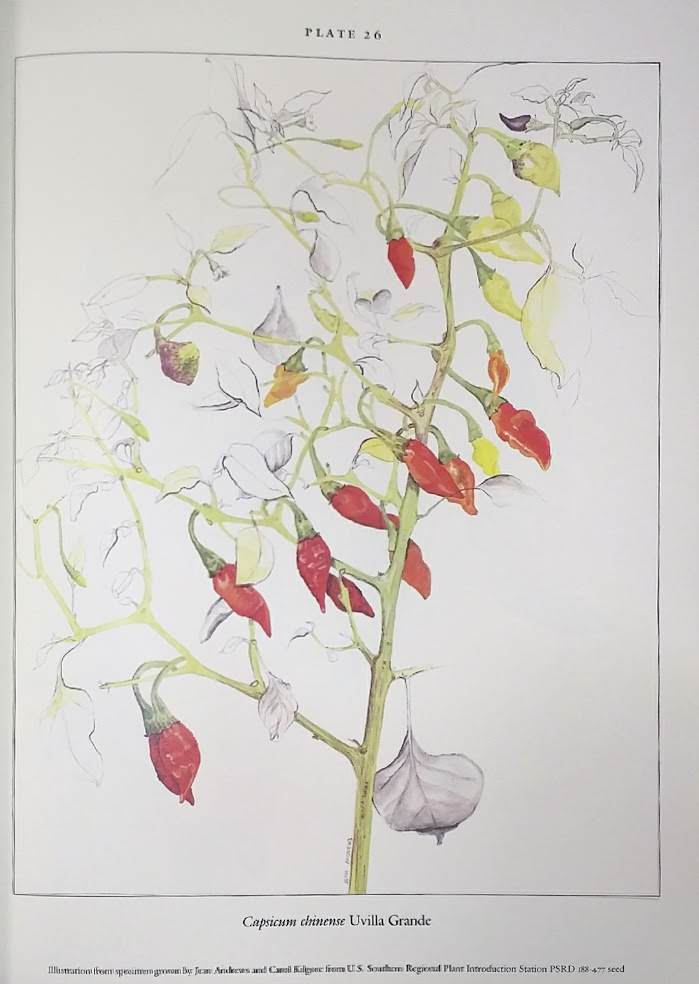Hey fellow chileheads..! I've been on the hunt for just over a year now for the elusive Uvilla Grande chile, specifically the Chinense one.
I first saw it, of course, in Jean Andrews classic book Peppers, The Domesticated Capsicums. The picture intrigued me and I went on a Google search for it. Using the USDA numbers she gave, as well as contacting a pepper researcher in the big Georgia station, I was able to pinpoint PI 188477 with relative ease. After a bit of back and forth I even got the USDA to send me some seeds! It turns out these are a Frutescens, and not anything like what I found in the book. Plus, these are infected with the PMMoV, so I decided I wouldn't even germinate them.
I found an image of the one I am looking for buried in a ten year old post from Reimer Seeds so I contacted them. They said they would see what they could do. Well, they ended up finding the same ones I did because they mentioned that the seeds have Mottle and they don't have them this year (2016).
So, basically, I have no idea where to find this chile. Has anyone here grown it? I'm starting to doubt it's even real haha!
I have no photo site stuff so I have no image today. My apologies. If you google "Uvilla Grande Pepper" an image comes up of yellow pods with a ruler in the image. Thats about the best I can do right now...
I first saw it, of course, in Jean Andrews classic book Peppers, The Domesticated Capsicums. The picture intrigued me and I went on a Google search for it. Using the USDA numbers she gave, as well as contacting a pepper researcher in the big Georgia station, I was able to pinpoint PI 188477 with relative ease. After a bit of back and forth I even got the USDA to send me some seeds! It turns out these are a Frutescens, and not anything like what I found in the book. Plus, these are infected with the PMMoV, so I decided I wouldn't even germinate them.
I found an image of the one I am looking for buried in a ten year old post from Reimer Seeds so I contacted them. They said they would see what they could do. Well, they ended up finding the same ones I did because they mentioned that the seeds have Mottle and they don't have them this year (2016).
So, basically, I have no idea where to find this chile. Has anyone here grown it? I'm starting to doubt it's even real haha!
I have no photo site stuff so I have no image today. My apologies. If you google "Uvilla Grande Pepper" an image comes up of yellow pods with a ruler in the image. Thats about the best I can do right now...

